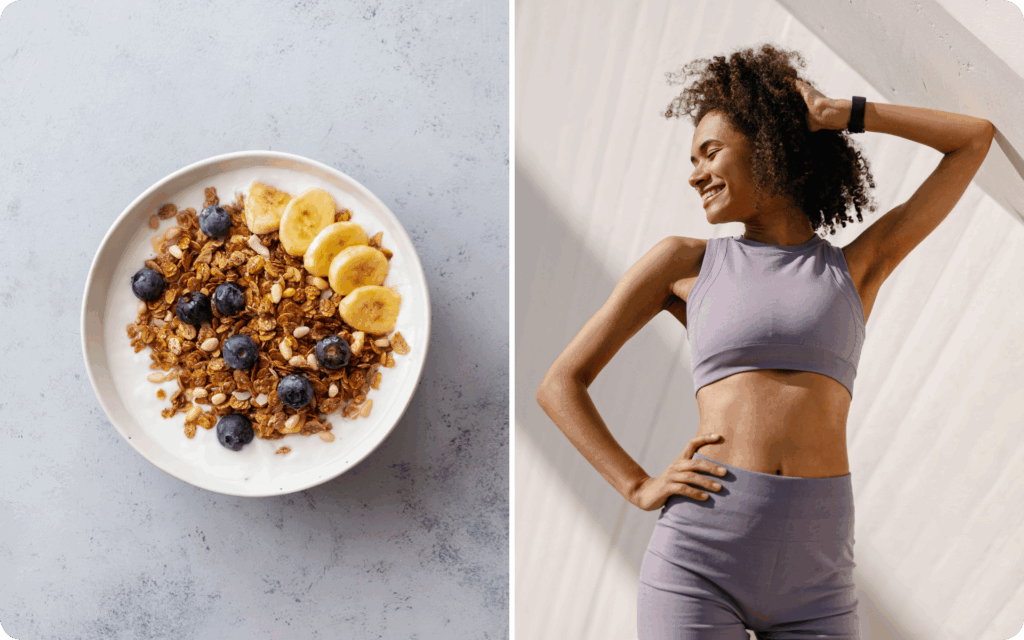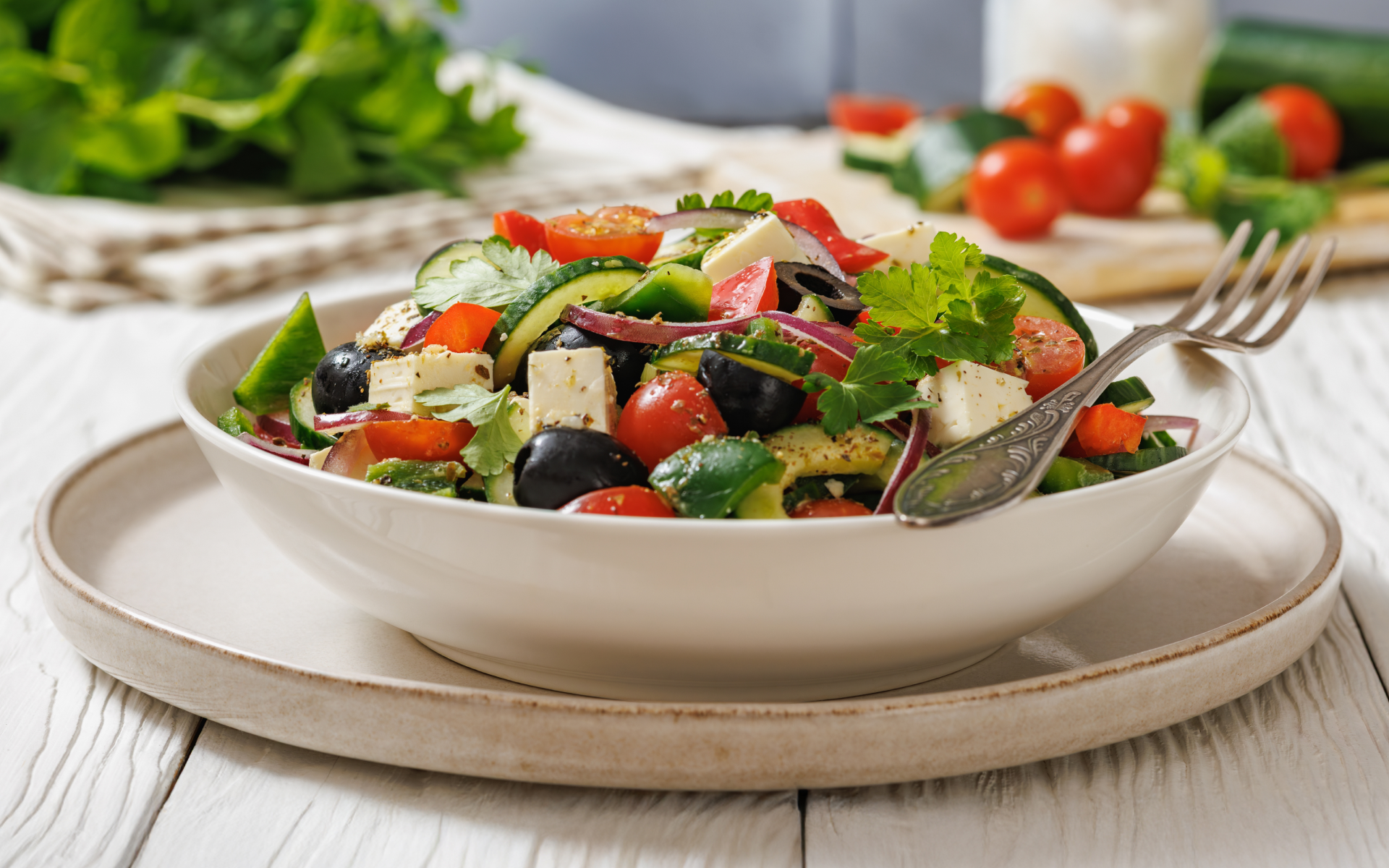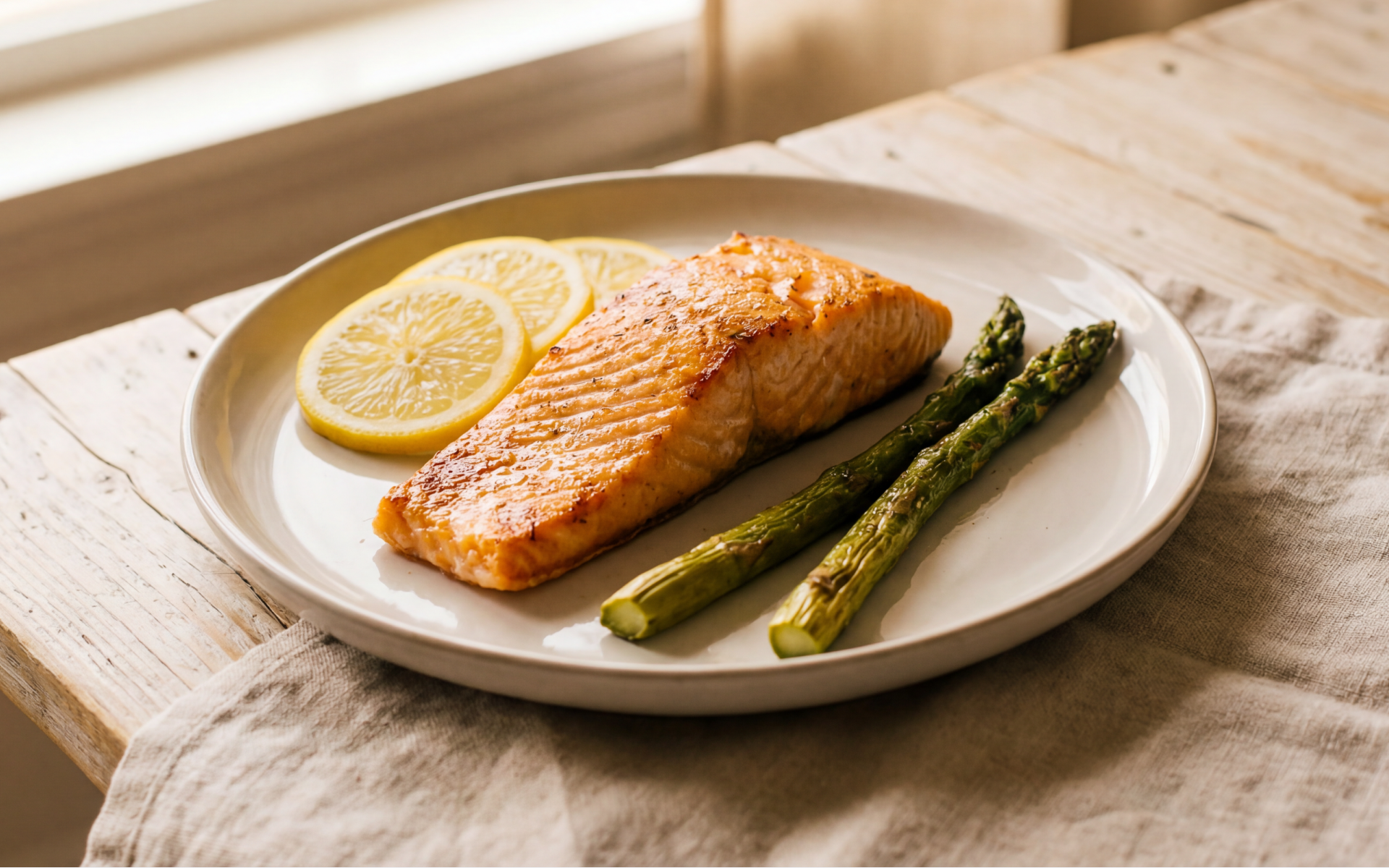An expanding waistline is often seen as a sign to cut back on calories or hit the gym more often. While it’s true that diet and exercise are key, growing belly fat is more than just an aesthetic concern. It points to an increase in a specific type of fat that can have serious health implications.
This isn’t about the soft fat you can pinch (subcutaneous fat), but the fat that lies deep within your abdomen, surrounding your organs. This is known as visceral fat. As more of this fat accumulates, it can harden and thicken, secreting harmful molecules that disrupt your body’s normal functions.
The good news? Visceral fat responds very well to changes in diet and exercise. This guide will provide a detailed one-month diet plan to help you reduce belly fat, slim your waist, and improve your overall health. We’ll explore what makes belly fat unique and give you actionable steps to start your journey.
Can I Slim Belly Fat in Just 30 Days?
You can certainly make a healthy start in 30 days, but achieving significant and lasting fat loss is a gradual process that extends beyond a single month. To understand why, it’s helpful to know what belly fat is really made of. The fat in your abdominal area consists of two types: subcutaneous fat, which is located just under the skin, and visceral fat, which is hidden deep inside, surrounding your organs like the liver and intestines (1).
Interestingly, fat tissue acts like an endocrine organ, meaning it produces hormones and other substances (2).
Visceral fat, in particular, secretes more harmful compounds than subcutaneous fat. For instance, it produces certain cytokines (3), which are proteins that can cause low-level inflammation throughout the body—a known risk factor for heart disease and other chronic conditions (4, 5). Visceral fat is also linked to a higher risk of dementia, asthma, and certain types of cancer (6, 7, 8).
Because visceral fat is stored out of sight, you can’t see it or pinch it. Losing it requires a consistent and sustained effort over time. While a month is a great timeframe to establish healthy habits and see initial progress, think of it as the foundational phase of a longer-term health journey.
Read more: High-Protein Low-Calorie Diet Meal Plan: Principles, Foods, And Safe Implementation
How Can I Lose My Belly Fat in 1 Month?
Losing some belly fat in one month is achievable, but it’s important to set realistic expectations. With a consistent and well-structured plan, you can expect to see moderate fat loss, potentially losing around 4 to 8 pounds (1.8 to 3.6 kg) (9).
This fat won’t come only from your midsection, as your body chooses where to burn fat from and in what order. You can’t influence this process (10, 11).
However, the habits you build during this month can lead to significant long-term results if you stick with them. Eventually, you can lose the belly fat.
Here are 11 evidence-based tips to guide you on the journey:
1. Get Active for 150 Minutes a Week
The recommendation to get at least 150 minutes of moderate-intensity activity per week is a cornerstone of a healthy lifestyle (12). This doesn’t mean you have to block out long sessions at the gym. You can break it up into shorter, more manageable chunks.
For example, a brisk 30-minute walk five days a week meets this goal. Research shows that combining exercise with a healthy diet is significantly more effective for weight loss and long-term maintenance than diet or exercise alone (13, 14).
2. Aim for Your 5 A Day
Eating at least five portions of a variety of fruits and vegetables daily is crucial. A single portion is about 80 grams of fresh, canned, or frozen produce (15). These foods are packed with vitamins, minerals, and fiber, which help you feel full and satisfied, reducing the likelihood of overeating (16).
Fiber also plays a vital role in digestive health and can help manage blood sugar and blood cholesterol levels (17).
3. Aim to Lose 1 to 2 Pounds per Week
A safe and sustainable rate of weight loss is about 1 to 2 pounds (0.5 to 1 kg) per week (9). This steady pace ensures you are primarily losing fat rather than muscle or water. It also makes it more likely that you’ll keep the weight off in the long run.
Losing weight too quickly can be counterproductive, often leading to a cycle of yo-yo dieting that can slow your metabolism (18).
If you wish to free yourself from all the extra pounds that have been weighing you down for way too long, start using the BetterMe: Health Coaching app and overhaul your entire life!
4. Read Food Labels
Understanding food labels is like having a secret weapon for healthy eating.
Most pre-packaged foods have nutrition information on the back or side. In the United States, labels list nutrients per serving, and the serving size can vary widely from product to product. This system helps you see how much of each nutrient you’re actually consuming in a typical portion—but it also means comparisons between products aren’t always straightforward.
In contrast, countries like the United Kingdom use a different approach. Many UK packages feature a color-coded “traffic light” system on the front, where green indicates a healthier choice, amber is moderate, and red means the food is high in fat, sugar, or salt.
For example, a food is considered (19):
- High in fat if it has more than 17.5g of fat per 100g.
- High in sugar if it has more than 22.5g of sugar per 100g.
- High in salt if it has more than 1.5g of salt per 100g.
Wherever you live, learning how your local labeling system works—whether it’s per serving or per 100 g, color-coded or numeric—can help you make informed, healthier choices every day.
5. Swap Sugary Drinks for Water
Sugary drinks like sodas, sweetened teas, and fruit juices are loaded with empty calories and offer little to no nutritional value. Swapping them for water is one of the simplest and most effective changes you can make (20, 21).
Staying hydrated is essential for metabolism and overall health (22). If you find plain water unappealing, try adding slices of lemon, lime, or cucumber for a natural flavor boost. Choose sparkling water if you prefer, just as long as it doesn’t contain added sugars. Dive deeper into the benefits of not drinking soda with our dedicated article.
6. Cut Down on High-Sugar, High-Fat Foods
Foods high in added sugar and unhealthy fats contribute significantly to weight gain, particularly around the abdomen (23).
Start by making simple swaps. For instance, replace sugary breakfast cereals with wholegrain alternatives like oats or whole-wheat toast. These provide more fiber and will keep you feeling full longer, preventing mid-morning snack cravings.
7. Share Your Weight Loss Plan
Accountability can be a powerful motivator. Share your goals with a friend, family member, or partner you trust. They can provide encouragement on tough days and celebrate your successes with you. Knowing someone is in your corner can make the journey feel less isolating and more manageable (24). Behavioral strategies, including self-monitoring and social support, are proven to be effective for long-term weight management (25).
8. Avoid Sudden Crash Diets
Crash diets that promise rapid weight loss are often unsustainable and unhealthy. They can lead to nutrient deficiencies, muscle loss, and a slower metabolism (26). Instead of drastic measures, focus on making gradual, sustainable changes to your eating habits. The best diet to lose belly fat is one that you can maintain for life, not just for a few weeks.
9. Don’t Stock Unhealthy Food
If your pantry is filled with chips, cookies, and candy, you’re more likely to reach for them when a craving strikes. Restructure your environment to support your goals. Stock your kitchen with healthier alternatives like air-popped popcorn, fresh fruit, rice cakes, and nuts. This makes it easier to make a good choice when you’re feeling hungry.
10. Don’t Skip Meals
Skipping meals might seem like an easy way to cut calories, but it often backfires. When you go too long without eating, you’re more likely to become overly hungry and snack on high-calorie foods or eat more at your next meal (27). Eating regular, balanced meals helps keep your energy levels stable and your appetite in check.
11. Don’t Finish Your Plate if You’re Full
Many of us were taught to clean our plates as children, but this habit can lead to overeating. Pay attention to your body’s hunger and fullness cues. Eat until you are comfortably full, not stuffed. Take a break mid-meal if it helps, since it takes a little time for fullness to register. If you have leftovers, save them for another meal. This simple practice can help you better manage your portion sizes and calorie intake (28).
Ready to find the best exercises for your goals? Explore the best exercise to lose belly fat.
What Is the Best One Month Diet Plan to Reduce Belly Fat?
The best one month diet plan to reduce belly fat is one that is balanced, sustainable, and creates a moderate calorie deficit (29). This means consuming fewer calories than your body burns.
For most women, a target of around 2,000 calories per day is recommended for weight maintenance (30), so a calorie-controlled diet for weight loss would be slightly below that, depending on activity levels.
The NHS Eatwell Guide provides a great framework for a healthy diet. It emphasizes (31):
- Eating at least 5 portions of fruits and vegetables daily.
- Basing meals on higher-fiber starchy carbohydrates like potatoes, whole grain bread, brown rice, or whole wheat pasta.
- Including some dairy or dairy alternatives.
- Eating lean protein from sources like beans, pulses, fish, eggs, and lean meat.
- Choosing unsaturated oils and spreads in small amounts.
- Drinking plenty of fluids.
Here is a sample 7-day meal plan to lose belly fat to give you an idea of what this looks like in practice.
A 7-Day Meal Plan to Lose Belly Fat
- Day 1
- Breakfast: Oatmeal with berries and a sprinkle of nuts.
- Lunch: Grilled chicken salad with mixed greens, cucumber, tomatoes, and a light vinaigrette.
- Dinner: Baked salmon with roasted asparagus and quinoa.
- Day 2
- Breakfast: Greek yogurt with a handful of almonds and a sliced banana.
- Lunch: Lentil soup with a slice of whole-wheat bread.
- Dinner: Turkey stir-fry with broccoli, bell peppers, and brown rice.
- Day 3
- Breakfast: Scrambled eggs with spinach and a side of whole-wheat toast.
- Lunch: Leftover turkey stir-fry.
- Dinner: Lean beef and vegetable skewers with a side salad.
- Day 4
- Breakfast: Smoothie with spinach, pineapple, unsweetened almond milk, and protein powder.
- Lunch: Tuna salad (made with Greek yogurt instead of mayo) in a whole-wheat wrap.
- Dinner: Chicken breast with steamed green beans and sweet potato.
- Day 5
- Breakfast: Oatmeal with sliced peaches and chia seeds.
- Lunch: Leftover chicken and sweet potato.
- Dinner: Shrimp and vegetable pasta with whole-wheat spaghetti and a tomato-based sauce.
- Day 6
- Breakfast: Whole-wheat pancakes with fresh fruit.
- Lunch: Quinoa salad with black beans, corn, red onion, and a lime dressing.
- Dinner: Baked cod with a lemon-dill sauce, served with roasted Brussels sprouts.
- Day 7
- Breakfast: Greek yogurt with mixed berries.
- Lunch: Leftover quinoa salad.
- Dinner: Homemade black bean burgers on a whole-wheat bun with a side of coleslaw.
This visceral fat diet plan is designed to be flexible. Feel free to swap meals and adjust portion sizes based on your hunger levels and preferences. This plan is also a great one month diet plan to reduce belly fat for females, but can be adapted for anyone.
Looking for more food inspiration? Check out these 32 foods that burn belly fat fast.
What Is the Best Breakfast for Losing Belly Fat?
A good breakfast for losing belly fat should be rich in protein and fiber. These two nutrients work together to keep you feeling full and satisfied, which helps prevent overeating later in the day.
- High in Protein
Protein helps build and maintain muscle mass, which is important because muscle burns more calories than fat, even at rest. It also takes longer to digest, which helps stabilize blood sugar levels (32). Great protein sources for breakfast include eggs, tofu, Greek yogurt, beans, and lean meats.
BetterMe is your fast-track ticket to long-lasting weight loss! Tailor your fitness journey and maximize your results with just a couple of swipes!
- Rich in Fiber
Fiber adds bulk to your meals without adding a lot of calories. It slows down digestion, which also contributes to a feeling of fullness (33). Oats, whole-wheat bread, fruits, legumes, and vegetables are all excellent sources of fiber.
- Low in Added Sugar
Starting your day with a sugary meal can lead to a rapid spike and crash in blood sugar, leaving you feeling tired and hungry soon after (34). Avoid sugary cereals, pastries, sugary drinks, and sweetened yogurts.
Read more: 7-Day Weight Loss Detox Homemade Plan: Is This the Answer to Your Weight Problems?
Can I Lose 3 Inches Off My Waist in 1 Month?
Losing three inches off your waist in a month is an ambitious goal, but it may be possible depending on your starting point and how consistently you follow your diet and exercise plan. It’s important to remember that exercise plays a crucial role here. Even if you don’t see a significant drop on the scale, you can still lose inches from your waist.
This is because exercise helps reduce visceral fat while building lean muscle mass. Muscle is denser than fat, so it takes up less space (35). As you lose fat and gain muscle, your waist circumference can decrease even if your overall weight remains stable. Combining a healthy diet with regular physical activity is the most effective strategy for slimming your waistline (36).
If you’re ready for a bigger commitment, consider this 30-day fat burning challenge.
Belly fat, particularly visceral fat, is biologically active and influenced by hormones like cortisol (the stress hormone). High stress levels can lead to increased fat storage in the abdominal area (37). Additionally, factors like genetics, age, and hormonal changes (especially during menopause) can make it more challenging to lose fat from this region (38). While you can’t “spot-reduce” fat from one specific area, a combination of aerobic exercise and strength training is most effective. Aerobic activities like running, cycling, and swimming help burn calories and reduce overall body fat, including visceral fat (39). Strength training builds muscle, which boosts your metabolism and helps your body burn more fat at rest (40). This can happen for a few reasons. First, you may be losing subcutaneous fat from other areas of your body before you see a reduction in your waistline. Second, issues like bloating or water retention can make your stomach appear larger. Finally, you might be losing fat but have weak underlying abdominal muscles, so incorporating core-strengthening exercises can help create a flatter appearance. A “stress belly” typically refers to the accumulation of fat in the abdominal area due to high levels of cortisol. This fat is often firm to the touch rather than soft and jiggly because it’s largely visceral fat stored deep within the abdomen, pushing the abdominal wall outward. It’s usually concentrated around the navel.Frequently Asked Questions
Why is belly fat so hard to lose?
What exercise burns belly fat?
Why am I losing weight but my stomach is still big?
What does a stress belly look like?
The Bottom Line
Reducing belly fat is about more than just fitting into your old jeans—it’s about investing in your long-term health. The strategies outlined in this guide provide a solid foundation for not only slimming your waist but also improving your overall well-being. By focusing on a balanced diet, regular exercise, and sustainable habits, you can make meaningful progress in one month and set yourself up for continued success. Remember to be patient with yourself and celebrate the small victories along the way.
DISCLAIMER:
This article is intended for general informational purposes only and does not serve to address individual circumstances. It is not a substitute for professional advice or help and should not be relied on for making any kind of decision-making. Any action taken as a direct or indirect result of the information in this article is entirely at your own risk and is your sole responsibility.
BetterMe, its content staff, and its medical advisors accept no responsibility for inaccuracies, errors, misstatements, inconsistencies, or omissions and specifically disclaim any liability, loss or risk, personal, professional or otherwise, which may be incurred as a consequence, directly or indirectly, of the use and/or application of any content.
You should always seek the advice of your physician or other qualified health provider with any questions you may have regarding a medical condition or your specific situation. Never disregard professional medical advice or delay seeking it because of BetterMe content. If you suspect or think you may have a medical emergency, call your doctor.
SOURCES:
- Subcutaneous adipose tissue & visceral adipose tissue (2019, pmc.ncbi.nlm.nih.gov)
- Biochemistry of adipose tissue: an endocrine organ (2013, pmc.ncbi.nlm.nih.gov)
- Why Visceral Fat is Bad: Mechanisms of the Metabolic Syndrome (2012, onlinelibrary.wiley.com)
- Cytokines and chemokines: At the crossroads of cell signalling and inflammatory disease (2014, sciencedirect.com)
- Chronic Inflammation (2023, ncbi.nlm.nih.gov)
- Adiposity in the older population and the risk of dementia: The Rotterdam Study (2022, alz-journals.onlinelibrary.wiley.com)
- The visceral adiposity index is associated with asthma, especially current asthma: A cross-sectional study of NHANES, 2003 to 2018 (2024, journals.lww.com)
- Visceral Adiposity and Cancer: Role in Pathogenesis and Prognosis (2021, pmc.ncbi.nlm.nih.gov)
- Steps for Losing Weight | Healthy Weight and Growth (2025, cdc.gov)
- Effect of abdominal resistance exercise on abdominal subcutaneous fat of obese women: a randomized controlled trial using ultrasound imaging assessments (2015, pubmed.ncbi.nlm.nih.gov
- A proposed model to test the hypothesis of exercise-induced localized fat reduction (spot reduction), including a systematic review with meta-analysis (2022, hummov.awf.wroc.p)
- Adult Activity: An Overview | Physical Activity Basics (2023, cdc.gov)
- Diet or Exercise Interventions vs Combined Behavioral Weight Management Programs: A Systematic Review and Meta-Analysis of Direct Comparisons – Journal of the Academy of Nutrition and Dietetics (2014, jandonline.org)
- Combined diet and physical activity is better than diet or physical activity alone at improving health outcomes for patients in New Zealand’s primary care intervention (2018, biomedcentral.com)
- Healthy diet (2020, who.int)
- Health Benefits of Fruits and Vegetables (2012, sciencedirect.com)
- Dietary fiber influence on overall health, with an emphasis on CVD, diabetes, obesity, colon cancer, and inflammation (2024, frontiersin.org)
- Physiological and Epigenetic Features of Yoyo Dieting and Weight Control (2019, frontiersin.org)
- Food labels (2022, nhs.uk)
- About Water and Healthier Drinks | Healthy Weight and Growth (2021, cdc.gov)
- Rethink Your Drink | Healthy Weight and Growth (2023, cdc.gov)
- Narrative Review of Hydration and Selected Health Outcomes in the General Population (2019, pmc.ncbi.nlm.nih.gov)
- Added sugar intake is associated with weight gain and risk of developing obesity over 30 years: The CARDIA study (2024, sciencedirect.com)
- Accountability Partners: Don’t Achieve Your Goals Alone! (2024, recreation.duke.edu)
- Role of Behavioral Interventions in the Management of Obesity (2021, cureus.com)
- Risks Associated With Excessive Weight Loss (2024, ncbi.nlm.nih.gov)
- The effects of skipping a meal on daily energy intake and diet quality (2020, cambridge.org)
- Intuitive Eating (2023, nutritionsource.hsph.harvard.edu)
- Optimal Diet Strategies for Weight Loss and Weight Loss Maintenance (2020, pmc.ncbi.nlm.nih.gov)
- Calories (2022, ncbi.nlm.nih.gov)
- The Eatwell Guide (2022, nhs.uk)
- Clinical Evidence and Mechanisms of High-Protein Diet-Induced Weight Loss (2020, pmc.ncbi.nlm.nih.gov)
- The Health Benefits of Dietary Fibre (2020, pmc.ncbi.nlm.nih.gov)
- High Blood Sugar and Hunger (2022, diabetesfoodhub.org)
- The Difference Between Muscle Weight vs. Fat Weight (2024, health.clevelandclinic.org)
- Weight loss – a healthy approach (2024, betterhealth.vic.gov.au)
- Stress and Obesity (2019, annualreviews.org)
- Factors affecting weight loss variability in obesity (2020, pubmed.ncbi.nlm.nih.gov)
- The (Many) Benefits of a Cardio Workout (2023, health.clevelandclinic.org)
- Strength training: Get stronger, leaner, healthier (2022, mayoclinic.org)

















